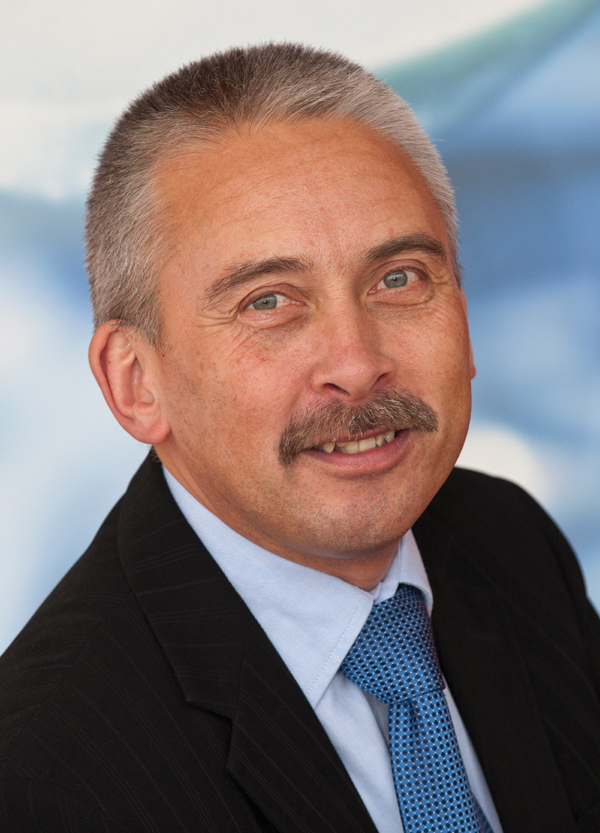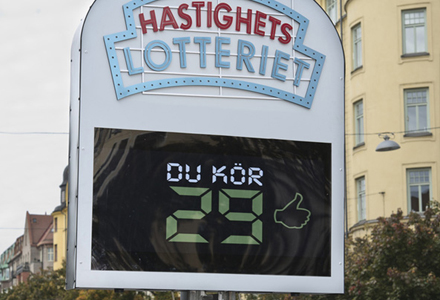
The Netherlands has been looking at incentivising rush-hour avoidance. The intention is to better understand road users' motivations and find alternatives to congestion charging
Something significant needs to happen if we are to adequately address the traffic congestion and other issues caused by the ever-rising numbers of vehicles on our roads. Congestion or distance-based charging is seen as one way of managing demand and raising revenue for improvements to transport infrastructure. However, charging is often criticised for being punitive and it remains a fact that, with the honourable exception of Stockholm's cordon-based scheme, it tends to fail to gain approval for implementation when put to any kind of vote.The Netherlands' proposed national scheme of distance-based road charging, which has stalled with the recent collapse of the country's government, included revisions to fuel and vehicle duties which were intended to make its introduction revenue-neutral. Even so, the scheme has still encountered political opposition.
Recent developments notwithstanding, the Netherlands has built a large body of research related to demand management. Besides the exploration of various candidate technologies (for example, see 'Counter proposal', pp.49-50 ITS International March-April 2008, for an overview of the work done to prove the efficacy and cost-efficiency of GNSS-based onboard units), work has gone on to gain a better understanding of road users' motivations and habits, and a not inconsiderable sum, €100 million, was put aside for this by the country's national government.
One avenue of research has looked at what happens when motorists are encouraged to avoid rush-hour travel through a system of rewards rather than by being 'punished' with a charge.
Searching for alternatives
"Congestion charging is only one way to affect behaviour and we recognised that there is a continuing need for more instruments with which to encourage change," says Albert Mulder, business consultant at the RDW Centre for Vehicle Technology and Information Services, one of the organisations involved in the first evidence-based trials ofSpitsmijden has brought together organisations from the public and private sectors, as well as academia. First trials, on the A12 between Zoetermeer and Den Haag, started in 2005 and were completed in the spring of 2007. At present in the Netherlands there are several projects going on or planned which are looking at how to influence travel behaviour (see Sidebar, 'Regional mobility tests in the Netherlands').
"These are all about changing behaviour, mostly through rewards," Mulder continues. "The various regional projects will feed up to the national level and we wanted to see how the concept of Spitsmijden stands up to being applied in different ways. So, for example, there are different pricing structures and means of interfacing with the driver. In some cases participants have an in-car device with a display which shows the rewards gained as they drive, whilst others are informed after the fact. There are different pricing structures and value-added services. Methods of payment, whether at the end of a project or ongoing via electronic transactions, are also being looked at."
The first trials on the A12 involved some 340 volunteers, all drivers of private vehicles. These were from a group that had been approached having been identified (using Automatic Number Plate Recognition (ANPR) data) as regular commuters on that route. Volunteers had to provide details of all vehicles registered to their home addresses and these were monitored using a combination of Dedicated Short-Range Communications (DSRC) and ANPR (ANPR cameras were installed on adjacent roads to catch anyone who might try to avoid being caught using alternative routes). Smart phones were also used to collect GPS data, and trial participants were able to access value-added services - in this case, information on the current traffic situation and public transport.
Personal choice
It was left to individuals to decide exactly how they reduced their peak-time travel. Car-pooling was actively encouraged, as was the use of public transport and cycling. Flexible work hours and home working were also options. The last two involved individuals negotiating with their employers over their terms of working. The Spitsmijden project did not look into whether there were any effects on the performance of the businesses which took part in the trials but, according to Mulder, there was an appreciation of being part of something that had a positive impact on the environment and social advancement - a move which is becoming an increasingly important part of many organisations' ethical policies.Volunteers could choose between two different kinds of rewards: money, or a smart phone with added services such as travel and traffic information. Those who chose financial reward were given amounts of €3.00-7.00 for each time they avoided using a private vehicle during peak times (only in the mornings on weekdays, holiday periods excluded) so benefits could amount to up to €35 per week. The various amounts were introduced to find out the elasticity in demand. For the volunteers who wanted to earn a smart phone the number of times they were traced in the pre-test period decided the number of avoidances they needed to get one.
The results were dramatic: the 340 members of the test group reduced their peak-time travel by 50 per cent and the greatest part of this reduction was achieved for a reward of just €3.00 per day. The smart phone group in general avoided peak periods more often than they needed to earn the phone.
Most participants chose to do this by varying their travel times, especially by leaving home earlier, but, says Mulder, there was also a reasonable take-up of public transport.
"Among those who cycled, there was a lot of comment on the positive effects on their health and fitness. It also became apparent when we spoke to some of the volunteers that their attitudes to congestion had changed - they were no longer prepared to sit in a stationary or slow-moving line of traffic and were more inclined to take positive action. Some of the participants found the travel information in this respect very helpful. Across the participants, there was a general recognition that congestion and the environmental damage caused by it is a national problem."
In November 2007, the Dutch Ministry of Transport decided to encourage more trials involving elements of the Spitsmijden concept, as part of the Different Payment for Mobility (Anders Betalen voor Mobiliteit) programme. Spitsmijden 2 set out to investigate: whether rewards continue to be effective over a longer period; the importance of alternative modes of transport in changing behaviour; and whether the methods of peak congestion avoidance selected by participants actually resulted in noticeably reduced peak period traffic on the A12, or whether the space created was merely filled by latent demand.
Spitsmijden 2 was ANPR-only, and again cameras were situated on both the primary and secondary routes to catch instances of rat-running and attempted fraud. It ran from September 2008 to the end of May last year.
"This was a much bigger affair, involving some 800 participants, and this time the project's stakeholders were involved in approaching businesses and setting up and agreeing covenants covering working hours and other terms of employment that would make the scheme possible," says Mulder. "This was done at a national level with the largest employers in the areas where the concept was being tested. The Minister of Transport was present at a launch event and this helped to generate significant additional interest."
Out of the 800 participants in Spitsmijden 2, some 250 volunteers provided additional GPS data using smart phones. Again, the participants in the trials managed to reduce their rush hour road usage by 50 per cent. According to Mulder, not only has it been proven that it is possible to positively affect road-users' driving habits by offering some form of incentive, but it is also possible to do it in a manner that is sustainable over an extended period of time.
At present Spitsmijden is being used as part of demand management programmes, especially in conjunction with major roadworks. Mulder says that it has not yet been decided exactly how, when or if it will become a part of the national road pricing scheme if that ever becomes operational. Some of the Spitsmijden projects have already finished and others are still running but all have shown comparative results. The numbers of participants (up to 6,500 in the Nijmegen region) and the degrees to which people look to avoid peak periods are striking. On average, in all projects, people appear to cut their peak trips by half, resulting on average in 18-25 per cent fewer trips per day, depending on the context and usual travel behaviour. Spitsmijden was for instance applied on the A12, at a major roadworks project between Gouda and Zoetermeer in 2009. The expected delay never occurred. With this project a daily reduction of 1,000-1,250 peak trips was achieved, apparently enough to safeguard a solid flow of traffic.
The Netherlands' kilometre tax
In line with the proposed introduction of distance-based charging, the Netherlands was to eliminate fixed car taxes (that is, the motor vehicle tax and vehicle purchase taxes). A base tariff per kilometre driven would then apply. The amount of the base tariff would have been based on a vehicle's CO2 emissions. A per-kilometre surcharge would be applied on top of that to vehicles travelling on particularly busy routes at peak time.
Regional mobility tests in the Netherlands
Six regions or corridors in the Netherlands are currently involved in mobility trials: metropolitan Amsterdam, Rotterdam, Den Haag, Utrecht, Eindhoven-Den Bosch and Arnhem-Nijmegen. The ambition is to get 50,000 volunteers involved in these projects by 2011.
Reasons for the testing are three-fold, to: improve accessibility within the region concerned; build up experience of using ITS technology for pricing systems and value-added services; and build up awareness of and contribute to a reduction of current mobility problems and possibilities in terms of solutions among both employers and employees.
No less important than the introduction of schemes and learning about the reactions of users/participants to different incentives are the needs to deal with privacy issues, to find the most appropriate detection and communications methods, and to learn how to detect and counter fraud.












